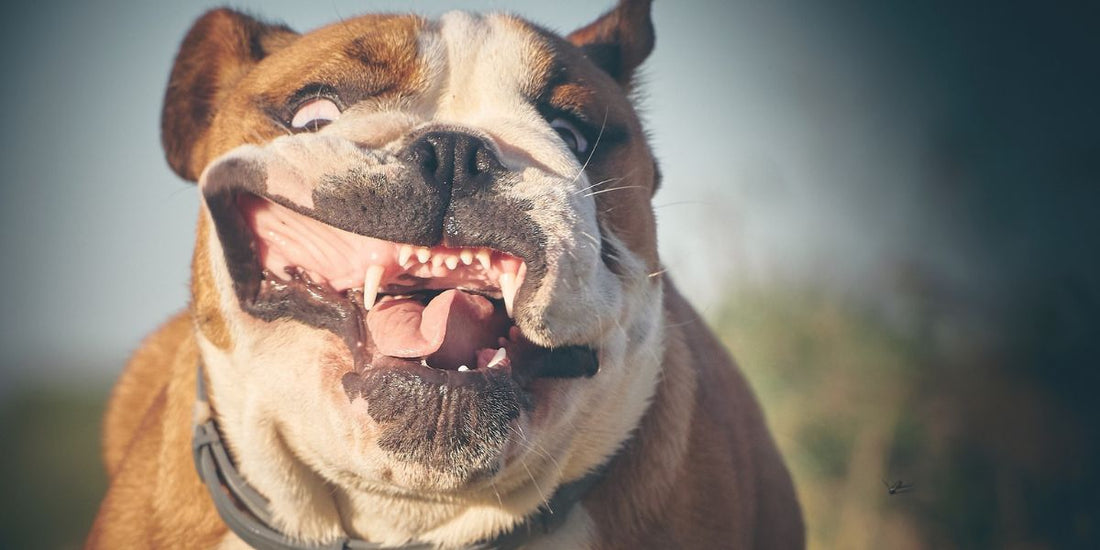
Dental duel: Dogs vs Cats - When teeth reveal the strength and diversity of canine and feline jaws!
Dog teeth

With their 42 teeth ( 12 incisors, 4 canines, 16 premolars, 10 molars) , dogs have a variety of tooth types for biting, grasping and shredding their food. Their strong canines and sharp molars allow them to attack bones and chew efficiently. Dogs' teeth also have a strong layer of enamel that makes them resistant to wear and tear.
Cats' teeth

Cats, on the other hand, sport a more delicate jaw with 30 teeth:
- upper jaw: 3 incisors, 1 canine, 3 premolars, 1 molar = 16 teeth
- lower jaw: 3 incisors, 1 canine, 2 premolars, 1 molar = 14 teeth
Their canines are extremely sharp and are used to immobilize their prey. The back molars are specially adapted for tearing meat. Cats' teeth also have strong enamel that allows them to tackle even the toughest foods.
Do you remember how many teeth you have?

As an adult, we have between 28 and 32 teeth (8 incisors, 4 canines, 8 premolars, 8 molars, the last 4 molars called "wisdom teeth" come out around the age of 18 but are not present in everyone. They are also often removed if they push in other teeth).
Jaw pressure force

When it comes to jaw pressure force, dogs take the lead with an average of 200 to 450 pounds per square inch (psi). This allows them to break bones and chew harder foods. Cats, on the other hand, display a pressing force of 150 to 200 psi, sufficient to firmly grip their prey but slightly less than that of dogs. For comparison, humans have an average pressure force of 60 to 70 psi.

Conclusion
The teeth of dogs and cats are truly specialized weapons, adapted to their dietary needs and their lifestyle. Dogs, with their 42 teeth and upper jaw strength, are fearsome predators capable of biting and shredding with power. Cats, on the other hand, have more delicate teeth, but their jaws and sharp teeth are perfectly designed to hunt and seize prey with precision.
It is in this dental competition that dogs and cats reveal their strength and diversity, offering anatomical wonders that fascinate pet lovers. By understanding the dental peculiarities of our faithful companions, we can better care for their oral health and appreciate the unique abilities that make each species a wonder of nature.
Sources:
- “Dental Anatomy of Dogs and Cats” - VCA Hospitals
- "The Bite Force of Dogs and Cats" - The Humane Society of the United States (HSUS)
- “Dental Health for Pets” - American Veterinary Medical Association (AVMA)
Did you like this article? Read more!
For more stories about the extraordinary abilities of dogs, follow us on the networks!
